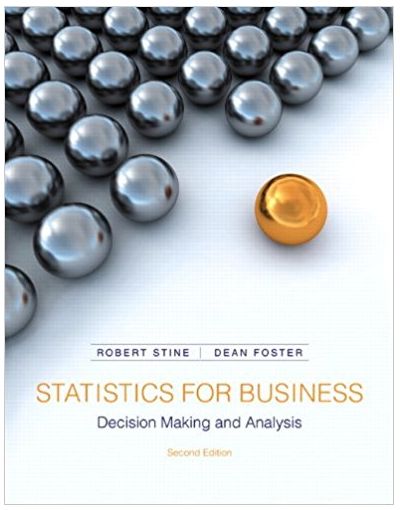Many businesses use auditors to check over their operations. With thousands of transactions, it can be easy
Question:
An auditor can spot sales fraud by contacting clients and confirming dates of transactions and their account balances. The auditor can inspect the inventory to see what is actually on hand and compare this count to the claimed levels. This is not possible, however, for a large firm. For a corporation that conducts thousands of transactions, an auditor cannot check every item. At best the auditor can check a sample of sales receipts and inventoried items.
For this exercise, you’re the auditor. The directors of a large corporation suspect that some sales receipts have been incorrectly dated and some inventory levels have been overstated.
Motivation
(a) Explain why an auditor need only inspect a subset of transactions rather than census every transaction.
Method
(b) In order for the probability calculations to be simplified, how should the inventory items be chosen?
(c) Suppose the corporation is divided into several sales divisions. The directors would like to simplify the gathering of sales records by picking one division at random. Would this be a good idea?
Mechanics
For these calculations, assume that 2% of sales receipts have been date shifted and 3% of inventory levels have been overstated.
(d) What is the probability that a random sample of 25 sales receipts will find none that are fraudulent?
(e) What is the probability that a random sample of 25 sales receipts and 25 inventory counts will find at least one incident of fraud?
(f) You can afford to audit a total of at most 100 sales receipts and inventory items. Under these conditions, how many of each should you sample in order to maximize the chances of finding at least one fraudulent record? Are you satisfied with this result?
Message
(g) Suppose that checking a random sample of 25 sales receipts and 25 inventory counts finds no evidence of fraud. Does this mean that the probability of fraud at this company is zero? Corporation
A Corporation is a legal form of business that is separate from its owner. In other words, a corporation is a business or organization formed by a group of people, and its right and liabilities separate from those of the individuals involved. It may...
Fantastic news! We've Found the answer you've been seeking!
Step by Step Answer:
Related Book For 

Statistics For Business Decision Making And Analysis
ISBN: 9780321890269
2nd Edition
Authors: Robert Stine, Dean Foster
Question Posted:





